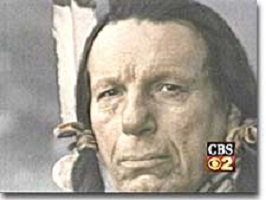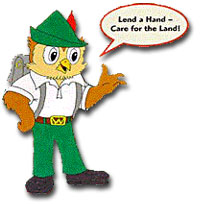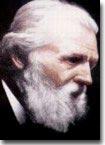57e. Environmental Reform

The early 1970s saw a series of public service announcements designed to increase public awareness of environmental issues. One of the most memorable images from the campaign featured Iron Eyes Cody shedding a profound tear in response to widespread pollution.
It was time to save the earth.
A century of full-fledged industrialism in America had taken its toll on the environment. Concerned citizens began to appeal in earnest to protect more of the nation's wilderness areas. Emissions into the atmosphere were creating smoggy haze rings above many metropolitan centers. Trash was piling up. Many Americans felt free to deposit waste from their increasingly disposable society along the sides of the roads. In the climate of social activism, the 1960s also became a decade of earth action.
Rachel Carson sent a wake-up call to America with her 1962 book Silent Spring. Carson wrote of the horrors of DDT, a popular pesticide used on many American farms. DDT wrought havoc on the nation's bird population. The pesticide, when ingested by birds, proved poisonous. Carson then witnessed a spring where birds did not return to farms.
The book created a firestorm of concern for the environment. Many students involved in the peace and civil rights movements also embraced the call for environmental awareness. President Johnson responded with the Wilderness Protection Act, the Water Quality Act, and the Air Quality Act. An activist organization named Greenpeace formed in 1969.
Inspired by Senator Gaylord Nelson and created by students, the nation celebrated its first Earth Day on April 22, 1970. President Nixon, despite his overall lack of sympathy for the earth movement, could not resist supporting popular environmentalist measures.
Hoping to inspire the younger generation to take better care of the environment, the U.S. Department of Agriculture's Forest Service created "Woodsy Owl" in 1970. Woodsy's original request of "Give a Hoot, Don't Pollute" has been updated to "Lend a Hand — Care for the Land!"
In 1970, he signed legislation creating the Environmental Protection Agency, a federal watchdog dedicated to proper care of the planet. He also stiffened standards for emissions and waste with the Clean Air and Clean Water Acts. The Endangered Species Act also provided much needed protection to wildlife on the brink of annihilation.
For years, the environmentalists had two major factions. Conservationists such as Theodore Roosevelt believed that the nation's natural heritage could be maintained through wise, efficient use of resources.
Preservationists such as John Muir and the Sierra Club celebrated the majesty of the landscape and preferred protection of wilderness areas. The 1960s ushered in the ecologists, who studied the relationships between living organisms and their environments. Pollution was destroying this delicate balance, and the result could be health problems, extinction of species, or even planetary destruction.

As a founder of the Sierra Club in 1892, John Muir served as an inspiration to environmental reformers of the 1960s.
Young Americans learned ecology in elementary school as a nationwide awareness campaign attempted to raise consciousness. Woodsy the Owl advised youngsters to "never be a dirty bird." Thousands felt their heartstrings tugged as they viewed television advertisements depicting mountains of trash culminating with a pensive Native American shedding a single, mournful tear.
The 1970s brought growing concerns with the nuclear power industry. Fission plants produced hazardous by-products that were difficult to dispose of safely. An accident at a nuclear power plant at Three Mile Island near Harrisburg nearly released a lethal bubble of radioactive gas into the atmosphere in 1979. Pressure groups mounted protests against nuclear testing by the United States. President Carter announced a bold initiative to develop renewable sources of energy.
Although many environmentalists were disappointed that all goals were not reached, substantive changes did improve the quality of American air and water, and the nation had its eyes open to the need to preserve the planet.






